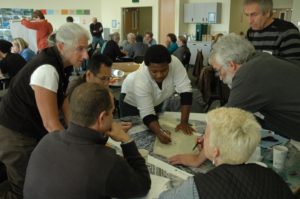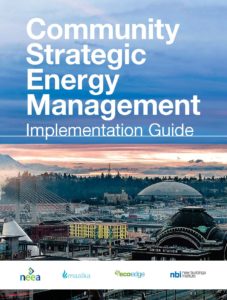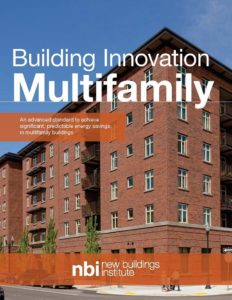A recent article from CityLab highlights the squeeze on low-income households—primarily renters—from rising energy cost and dwindling funding for low-income energy assistance programs. Disadvantaged communities—low-income and largely minority neighborhoods–spend a much higher share of their income on energy, according to a 2016 study by the American Council for an Energy Efficient Economy (ACEEE) and Energy Efficiency for All (EEFA). In fact, researchers found that median energy spending for low-income households can hit three times higher than the rest of the population. Low-income families are adversely impacted by rising utility costs with the poorest families spending between 7.2% and 10% of their incomes on electricity, while the average household pays less than half of that amount, or only 3.5% of their income on electricity.

Why? Low-income families are more likely to experience higher utility costs per square foot because of poor construction and maintenance of rental buildings. In addition, vulnerable populations often juggle paying for essentials such as food and medicine and incur additional fees due to late payments. They are more likely to have power shut off and not turned back on due to the financial barrier to reinstate power.
Energy efficiency has the potential to break this cycle and work to advance better building energy performance through policy development, design guidance and support, and research. At New Buildings Institute (NBI), our goal is to make cost of running a household more affordable for all. Even a 1% savings for a family of four could provide an additional $400 a year–money that could be spent on other needs, such as medicine and school supplies, according to NBI calculations. This could lead to a reduced burden on government aid programs, utilities, and collection agencies.
To support better efficiency outcomes in the multifamily sector, NBI has published an advanced building performance guide for multifamily housing, which includes the most impactful prescriptive measures to deliver up to 25% energy savings over the 2015 International Energy Conservation Code (IECC). Strategies described in the Multifamily Guide address envelope, space conditioning, ventilation, lighting, water heating, and appliances, and offer savings directly to the tenants. Providing these tested prescriptive measures allows designers to cost-effectively deliver energy-efficient housing that meets the need of the building owners to keep and maintain tenants and for the tenants to see better affordability with lower utility bills.
Breaking down the split incentive barrier
Still, a very real barrier is the split incentive between who pays and who benefits from better building efficiency. In many rental scenarios, the tenants who are responsible for paying the energy bills do not have the ability to make capital investment decisions. The tenant is stuck with inefficient building equipment, and the building owner is not inclined to make efficiency upgrades because they do not receive a financial benefit.
This split-incentive has been a barrier to deploying energy efficiency measures in buildings for decades. Without grants to support the initial investment, many affordable housing providers are unable to pursue energy saving opportunities, making them less affordable in the long run. However, once initial investments are made, the advantages for renters are tremendous. Efficiency reduces future utility bills, maintenance costs, and tenant vacancy, making a project more valuable and ensuring long-term economic stability for multifamily buildings.
One example of where assistance with initial energy efficiency investments paid off in action is REACH Community Development (REACH) in Portland, Oregon, which saw that advanced design practices for new construction projects allowed for an opportunity to build affordable housing with ultra-low energy needs. REACH set out to build Orenco Station using the Passive House rating system. The property includes triple-paned windows, a heat recovery system, and a super-insulated building envelope.
A typical code-compliant, affordable housing unit with two-bedrooms would be expected to cost $123 /month for electricity. Orenco Station residents pay about $50/month, the savings equate to a 1-2% increase of their annual income. Affordable rent and utility bills means stable housing for both tenants and owners. It also provides other non-energy benefits, such as better indoor air quality and less illness. Less missed days from work due to illness also means more wages and job stability, providing an opportunity to rise in current economic position.
Some states have taken notice of the impact energy efficient housing plays in low-income communities and they encourage high-performance building by placing funding conditions on funding sources like grants and state tax credits. The Pennsylvania Housing Finance Agency (PHFA) established requirements for the use of their housing tax credits by prioritizing projects for developers seek Passive House certification. Since updating the policy in 2015, the state has provided tax credits to support the development of over 900 Passive House units. Pennsylvania is on its way to hosting the largest concentration of Passive House/Net-Zero Energy-Capable dwelling units in the U.S in just a few years of the policy change.
Social equity is not a single-topic issue but a complex web of social structures that requires active involvement from those impacted as well as outside parties. Equity requires inclusion from all community members impacted before making a decision. It is more than reduced energy bills and a comfortable indoor environment but these things are also important and a good place for NBI to be involved.
We work with cities on codes and policies to improve building energy efficiency from the forefront and reduce carbon emissions from non-renewable energy. Emission reduction policy advancement positively impacts communities, especially low-income neighborhoods because affordable housing is often situated in undesirable locations near train tracks, highways, industrial areas, and near busy roads which are noisy, have high are pollution, and can be unsafe for children. NBI works with jurisdictions to implement policy, incentive, and regulatory tools to create opportunities for building energy efficiency and renewable energy to improve indoor and outdoor air quality making homes and neighborhoods more equitable for everyone. By encouraging clean energy sources, will reduce coal transportation and burning improving not immediate communities, but the communities where non-renewable energy is generated.
 Last year NBI worked with Portland Housing Bureau to develop their Affordable Housing Green Building Policy to make high-performance buildings available to all citizen. NBI also works with states, like the State of California Department of General Services (DGS), to increase their building energy efficiency, reduce energy costs, and meet state GHG emission targets. We have collaborated with cities to set new renewable portfolio standards (RPS), with some even seeking 100% renewable energy.
Last year NBI worked with Portland Housing Bureau to develop their Affordable Housing Green Building Policy to make high-performance buildings available to all citizen. NBI also works with states, like the State of California Department of General Services (DGS), to increase their building energy efficiency, reduce energy costs, and meet state GHG emission targets. We have collaborated with cities to set new renewable portfolio standards (RPS), with some even seeking 100% renewable energy.
This is just the start. As we continue to develop infrastructure and tool that will help rapidly improve building energy performance and curb the negative impacts of climate change, we are working diligently to understand how these programs also address affordability, equity, and livability in all communities especially those that need relief the most.
by Webly Bowles, project manager at NBI. Webly brings her wide range of experience in multifamily affordable housing energy efficiency and finance, as well as sustainable building to NBI’s zero net energy building programs, including principles of design, construction, and operation.

